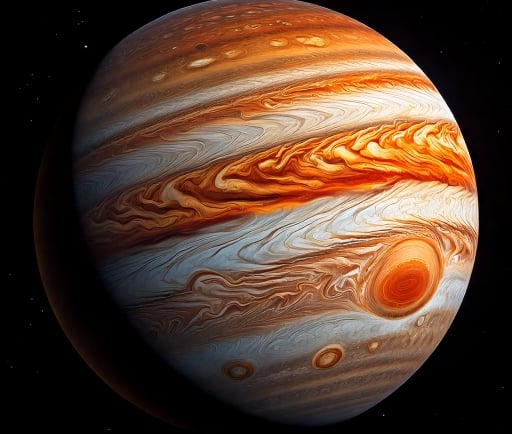Exploring VHS 1256 B: The Dusty Secrets of a Super-Jupiter Exoplanet


Introduction to Exoplanets
Exoplanets, or planets beyond our solar system, have captivated astronomers and scientists alike. Among the most intriguing of these celestial bodies is VHS 1256 B, a remarkable super-Jupiter gas giant that offers a wealth of information about planetary formation and atmospheric conditions. This blog post delves into the unique characteristics of VHS 1256 B, with particular emphasis on the dust storms that shroud this distant world.
The Unique Characteristics of VHS 1256 B
VHS 1256 B is situated approximately 76 light-years away from Earth and is part of a binary system. This exoplanet has garnered significant attention due to its immense size, comparable to that of Jupiter, making it a super-Jupiter. The environmental conditions present on VHS 1256 B are extreme, with temperatures soaring to several hundred degrees, resulting in gaseous clouds that produce violent storms.
The Dust Storms Enveloping VHS 1256 B
One of the most fascinating aspects of VHS 1256 B is the pervasive dust that encompasses its atmosphere. These dust storms are not merely spectacular phenomena; they offer insights into the atmospheric dynamics and chemical compositions of gas giants. The extensive dust layers observed on this exoplanet are likely composed of silicate materials, mirroring the dust found in various parts of our own solar system.
The dust particles play a crucial role in the planet's climate, as they influence the thermal structure by absorbing light and interacting with atmospheric gases. This interaction leads to dynamic weather patterns that can fluctuate on a massive scale. For instance, such dust storms could lead to rapid changes in temperature and pressure, contributing to the variability in the weather observed on VHS 1256 B.
Moreover, the presence of these dust storms raises intriguing questions about the formation of such planets. The interaction between the dust and the gaseous elements in the atmosphere might provide clues regarding the processes that lead to planet formation. Understanding the dust dynamics on exoplanets like VHS 1256 B may unlock broader knowledge about the evolution of planetary systems throughout our universe.
Conclusion: The Future of Exoplanet Research
As research on exoplanets continues to thrive, VHS 1256 B stands out with its distinctive features and the enigma of its stormy atmosphere. The dust storms surrounding this super-Jupiter not only defy our expectations but also pave the way for further exploration and study. With advanced telescopes and observation technologies furthering our capabilities, the secrets of VHS 1256 B and other exoplanets will become increasingly accessible, providing insights into these distant worlds that remain shrouded in mystery.
